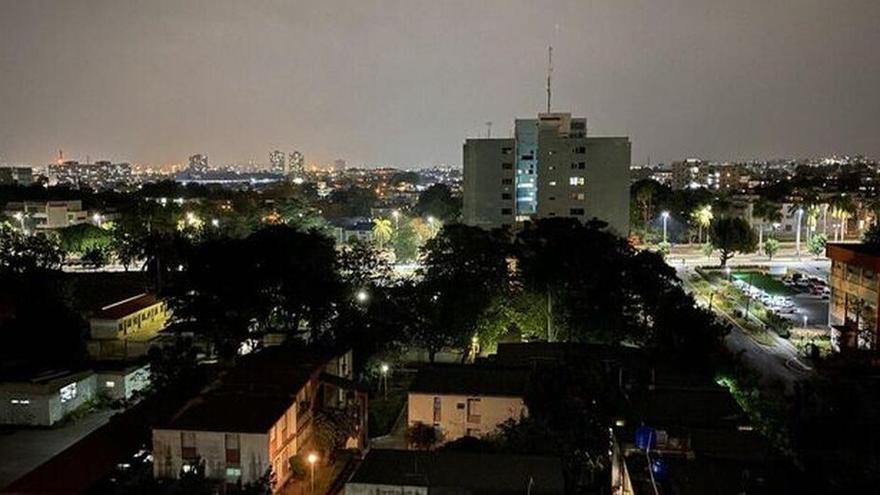
![]() 14ymedio, Madrid, 30 May 2023 — Electricity generation was reduced by almost a quarter in just four years in Cuba. According to the data published on Monday by the National Bureau of Statistics (ONEI), last year there were 15,732 gigawatts (GW) per hour on the Island, 24.5% less than in 2018, when the amount reached 20,837 GW.
14ymedio, Madrid, 30 May 2023 — Electricity generation was reduced by almost a quarter in just four years in Cuba. According to the data published on Monday by the National Bureau of Statistics (ONEI), last year there were 15,732 gigawatts (GW) per hour on the Island, 24.5% less than in 2018, when the amount reached 20,837 GW.
The figures reveal a progressive fall in the last four years that accelerates with the pandemic up to the strong collapse of the last year. In 2019, the decrease was minimal, just 0.63%. However, already in 2020 the fall was large, with 7.8%. Although smaller, the decline continued strongly in 2021, when 5.8% less was generated than in the scarce previous year and, finally, the catastrophic situation of 2022 is reached, with -12.4%.
The data are incompatible, in the words of Cuban economist Pedro Monreal, “with the economic recovery in the short term or with long-term development.”
The expert also looks at the alternative sources of electricity generation, which in the case of distribution are even worse, although their weight is less as a share of the capacity of the Island. In the last four years, the electricity obtained by generators fell by 42%, which also rises to 44.6% if the focus is on the last year. In 2021, 5,902 GW per hour were obtained, the highest amount in the last four years, while in 2022 only 3,273 GW were produced, the lowest of the same period.
Last, there is renewable energy. Part of the strategy announced by Cuba years ago involves the conversion of its energy matrix to a clean one, for reasons of sustainability and potential of the Island, with enough hours of light to be very competitive in solar. However, and despite the fact that the regime has put all its efforts into selling the green energy parks in the portfolio of opportunities for foreign investment, the money does not arrive and progress is extraordinarily slow. In addition, in practice, the Government has not made its own investments that demonstrate its interest in a real change in this regard.
Thus, the Island’s renewable electricity generation barely reaches 4.1%, when the intention is to reach 24% by 2030. “The official statistics reflect the difficulty in increasing the relative weight of renewable sources of electricity in Cuba,” insists Monreal, who also observes an interesting fact. Between 2021 and 2022, renewable electricity generated by auto-production fell 36.1%, from 432.4 GW/h to 276.1.
Another interesting fact revealed by the balance sheet concerns consumption. Both private and state residential consumption was forcibly reduced in the last year due to the fall in generation. Homes used 8,891 GW/h last year of the 14,862 that were consumed in total (and that includes national and imported generation with losses subtracted). Private consumption, meanwhile, used only 834, an amount higher than the 552 consumed in 2022, attributable to the growth of the private sector. As for the state sector, it consumed 4,205 GW/h; 173 went to public lighting and 1,590 to inputs.
The balance sheet also indicates the growth of imported energy, one of the few numbers that increases. In 2021, 1,384 GW/h had to be brought from abroad, compared to 2,590.7 in 2022, 87% more. That year there were eight mobile plants of the Turkish company Karadeniz Powership on the Island, one of which left this April after having fulfilled its contract, according to the Cuban government. Although the rental price of these platforms is unknown, the authorities have never hesitated to describe the cost as “very high,” while insisting that there was no better short-term solution if they wanted to stop the already eternal blackouts that the population has been suffering for a year with almost no interruption.
Another striking fact that the report leaves out is the disproportion of territorial consumption. Havana, where a large amount of population and most of the powerful companies are concentrated, takes a quarter of the island’s energy, 25.2%. Matanzas follows, but at such a distance that it barely stays at 8.1%.
The figures change if gross production is analyzed. The province of the capital only generates 1.5% of the total, with Matanzas (22%), Holguín (16%) and Cienfuegos (14%) contributing the most, both through the public service and through autonomous producers, who direct the surplus into the National Energy System.
Last Saturday, in an interview in Cubadebate, Vicente de la O Levy, Minister of Energy and Mines, promised that with the fulfillment of the maintenance planned until May, “it is expected that we will face the summer in better conditions” from the point of view of electricity. The official said that there would be a decrease in the “uncomfortable lines” in the service centers, after weeks of scarce fuel availability, and added that electricity generation will have, from now on, “a considerable decrease in affectations.”
Barely 24 hours later, some points of the Island had already accumulated about 20 hours without electricity.
Translated by Regina Anavy
____________
COLLABORATE WITH OUR WORK: The 14ymedio team is committed to practicing serious journalism that reflects Cuba’s reality in all its depth. Thank you for joining us on this long journey. We invite you to continue supporting us by becoming a member of 14ymedio now. Together we can continue transforming journalism in Cuba.
